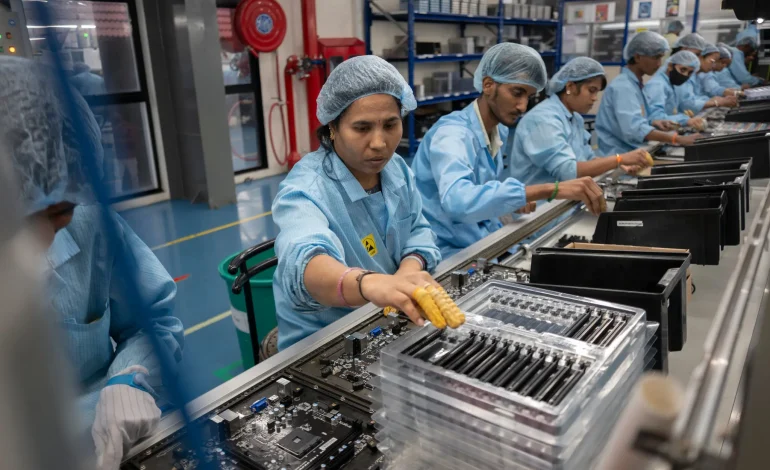As President Donald Trump renews calls for Apple to bring iPhone production to the United States, India is already becoming a global hub for high-end electronics manufacturing — offering a revealing look at what such an effort would require, the New York Times reports.
In Devanahalli, a rural district outside Bengaluru, Foxconn, the Taiwanese company that assembles most of the world’s iPhones, is constructing a massive $2.5 billion factory complex. With its sleek buildings rising from red soil and dormitories being built for thousands of workers, the site is a cornerstone of India’s strategy to become a competitive manufacturing destination for global tech firms.
This rapid expansion highlights both the promise and the complexity of building a large-scale electronics industry from the ground up — something Trump hopes to see replicated in the US, but which experts say would demand extensive public investment, industrial coordination, and workforce development.
Apple began shifting some iPhone production to India in the wake of the COVID-19 pandemic and rising geopolitical tensions with China. Two years later, India now accounts for 18% of global iPhone production, with that number projected to rise to between 25% and 30% by the end of 2025.
The factory in Devanahalli, which currently employs 8,000 people, is expected to eventually support 40,000 workers. It has already started to reshape the local economy, with wages rising and a growing supply chain of small and mid-sized companies forming around the plant — reminiscent of the industrial ecosystems in China’s manufacturing hubs.
Much of what makes this transition work is not just Foxconn’s investment, but the support of a broader network of firms — Indian, American, Taiwanese, and South Korean — that are providing everything from circuit boards to worker recruitment services.
Companies like Indo-MIM, a metal-injection molding manufacturer, and Centum, a contract electronics producer, are adjusting their operations to meet Apple’s needs. Zetwerk, another Indian firm, is pitching itself as a smaller competitor to Foxconn and is already supplying parts to Apple contractors.
This kind of localized production network is one reason why Apple can scale operations in India relatively quickly — and why replicating this in the US would be challenging without similar ecosystems.
India’s success is underpinned by government policy and financial incentives. Since launching the “Make in India” initiative in 2015, Prime Minister Narendra Modi’s administration has committed $26 billion to support strategic manufacturing sectors, including electronics.
India also has a clear labor advantage. Despite high unemployment and underemployment, the country is home to millions of engineering graduates, and states like Karnataka are eager to attract industrial development. Some Foxconn workers have relocated from other parts of the country, while others, like Sneha — a math graduate who works at the Devanahalli plant — live close enough to walk to work.
By contrast, the US would need to significantly expand its skilled manufacturing workforce to meet the needs of large-scale consumer electronics production. Josh Foulger, head of Zetwerk’s electronics division and a former Foxconn executive, emphasized that manufacturing “does a very democratic job” by creating employment across all skill levels — but noted that building a pipeline of trained workers takes time and planning.
Despite progress, India still imports many of the high-value components for iPhones — such as chips and camera modules — which has led some critics to describe current efforts as “screwdriver assembly.” But Apple is under pressure from the Indian government to source 30% of its components locally by 2028, and some progress is being made, particularly in casings and specialized materials.
India’s path illustrates both the scale of coordination and long-term investment required to develop a self-sustaining manufacturing sector. It also reflects a deep strategic ambition: to emulate China’s industrial rise while addressing India’s urgent need for job creation.










The latest news in your social feeds
Subscribe to our social media platforms to stay tuned